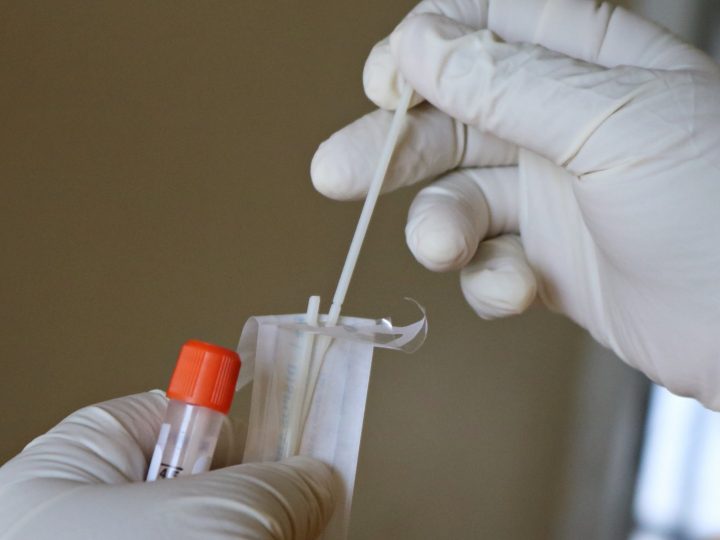Clinical Management and Treatment of Viral Hepatitis Co-infections in HIV-Positive Individuals
Viral hepatitis co-infections, particularly hepatitis B (HBV) and hepatitis C (HCV), are significant comorbidities in people living with HIV (PLWH). The European AIDS Clinical Society (EACS) guidelines provide comprehensive recommendations for screening, monitoring, and treating these co-infections to improve patient outcomes and reduce the risk of liver-related complications.
Screening and Diagnosis:
The guidelines emphasize the importance of routine screening for viral hepatitis in HIV-positive individuals. HCV screening should be performed at diagnosis and annually thereafter, with more frequent testing for those at higher risk. HBV screening should include tests for HBsAg, anti-HBc, and anti-HBs antibodies. Additionally, all HBsAg-positive individuals should be screened for hepatitis D (HDV) co-infection.
Liver Health Assessment:
For individuals with viral hepatitis co-infections, a thorough evaluation of liver health is crucial. This includes assessing liver function through blood tests (ALT, AST, GGT, ALP) and staging fibrosis using non-invasive methods such as FibroScan or serum fibrosis markers. The guidelines provide specific cut-off values for these tests to detect advanced fibrosis and cirrhosis in HIV/HCV and HIV/HBV co-infected individuals.
Treatment Approaches:
1. HCV/HIV Co-infection:
The treatment landscape for HCV has dramatically improved with the advent of direct-acting antivirals (DAAs). The guidelines recommend that all HCV/HIV co-infected individuals be considered for DAA-based therapy, regardless of liver fibrosis stage. The choice of DAA regimen depends on HCV genotype, prior treatment history, and the presence of cirrhosis. Preferred options include combinations such as glecaprevir/pibrentasvir, sofosbuvir/velpatasvir, and elbasvir/grazoprevir, with treatment durations typically ranging from 8 to 12 weeks.
2. HBV/HIV Co-infection:
For HBV/HIV co-infected individuals, the cornerstone of treatment is antiretroviral therapy (ART) that includes tenofovir (TDF or TAF) unless there is a history of tenofovir intolerance. This approach serves the dual purpose of treating both HIV and HBV. The guidelines stress the importance of lifelong therapy to prevent severe hepatitis flares and liver decompensation upon HBV reactivation.
3. HDV/HBV/HIV Co-infection:
For individuals with HDV co-infection, the guidelines recommend considering long-term pegylated interferon (PEG-IFN) treatment in association with tenofovir-based ART for those with significant liver fibrosis. A newer agent, bulevirtide, is also recommended in combination with TDF/TAF for HDV-RNA positive persons with compensated liver disease.
Monitoring and Follow-up:
The guidelines emphasize regular monitoring of liver function, viral loads (HBV-DNA, HCV-RNA, HDV-RNA), and fibrosis progression. For HCV-treated individuals who achieve sustained virological response (SVR), ongoing surveillance for hepatocellular carcinoma (HCC) and esophageal varices is recommended if these indications were present pre-treatment.
Special Considerations:
The document addresses several special scenarios, including the management of HBV reactivation in HBsAg-negative, anti-HBc positive individuals undergoing immunosuppressive therapy. It also provides guidance on the treatment of acute HCV infection and the approach to HCV retreatment in cases of prior DAA failure.
Drug-Drug Interactions:
Given the complexity of managing multiple infections and medications, the guidelines include a comprehensive table of drug-drug interactions between hepatitis treatments and antiretroviral drugs. This information is crucial for optimizing therapy and avoiding potential adverse effects.
Conclusion:
The EACS guidelines provide a comprehensive framework for managing viral hepatitis co-infections in PLWH. By following these evidence-based recommendations, healthcare providers can effectively screen for, treat, and monitor hepatitis co-infections, ultimately improving long-term outcomes for this population. The guidelines underscore the importance of a personalized approach, considering individual patient factors, viral characteristics, and potential drug interactions in the management of these complex co-infections.
Reference
European AIDS Clinical Society. “EACS Guidelines 12.0 PART V: Clinical Management and Treatment of Viral Hepatitis Co-infections.” EACS European AIDS Clinical Society, 2024, pp. 128-133.





